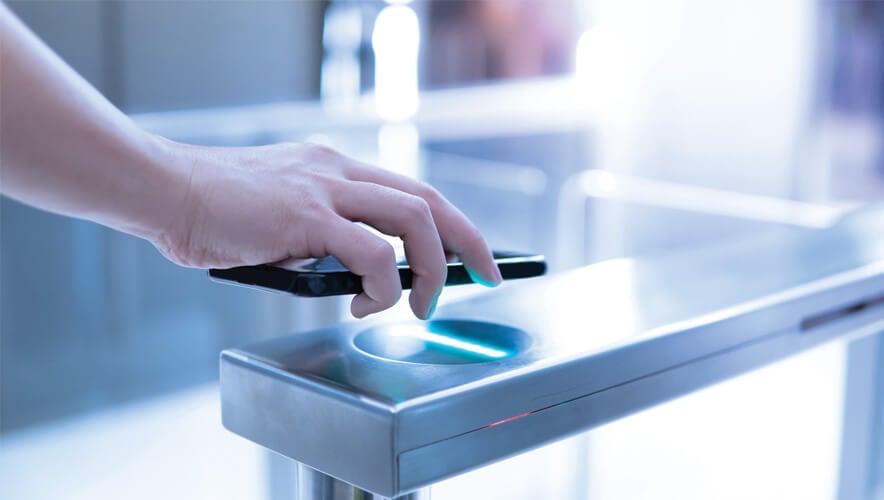Now is the Time to Convert to Mobile Access
The year 2020 has taught us that security will never be the same again, which is why now is the time to migrate to using mobile phones as credentials. In addition to aiding organizations in following recommended COVID-19 requirements from governing authorities, more solutions have entered the market—providing increased options for end users and driving costs down from just a few years ago.
In the past, the only solutions available charged per credential—making it cost-prohibitive for large companies to migrate. Now solutions are available that charge per reader, immensely reducing the cost of overall investment. Organizations can also upgrade readers at their own pace as budget allows or to meet project timelines. During the installation period, solutions exist that allow end users to use physical credentials alongside mobile credentials to provide a gradual transition.
Going mobile allows organizations to eliminate the cost of cards and hassle of card distribution. Employees no longer need to go to the badging office, have a photo taken, and wait for their card. Replacing lost, stolen, or forgotten cards is eliminated—saving time and money. And it’s more affordable to issue a temporary mobile credential if someone forgets his or her card or a visitor needs access.
Preventive measures in response to COVID-19 also support conversion to a mobile solution. Mobile credentials support physical distancing measures during their distribution process; employees no longer need to physically interact with the security team or visit a badging office. All devices, photos, and credentials can be centrally managed from a remote location.
Additionally, access control system read ranges can be configured to support social distancing and hygiene requirements. Mobile credentials reduce physical contact because they rely on using an individual’s personal phone to open a door rather than touching a PIN pad. The read range for an automatic door can also be timed to eliminate touching of PIN pads or door handles.
Apps that support mobile access control along with return to work initiatives are now available. These apps offer a wide range of solutions to simplify processes. For instance, an app can be used with multiple access control systems—making it ideal for large, enterprise end users who acquire businesses and manage more than one system. Apps allow users to store multiple credentials on a phone. Rather than carry multiple cards, users can select the credential they need to access a specific location or building.
Some apps support mobile or physical credentials, creating even more flexibility and possibilities for organizations. Companies can require that employees respond to a wellness questionnaire before their physical or mobile credentials are activated. If the employee’s answers do not align with the company’s policies, the employee’s credential can be disabled. Companies can choose how often employees answer the questions—for example, once every morning before coming to work. An audit trail will help companies remain in compliance.
The time is now to move to mobile. Today’s options support COVID-19 guidelines, and are cost-effective and future-proof.
Kim Rahfaldt is director, media relations, at AMAG Technology.
